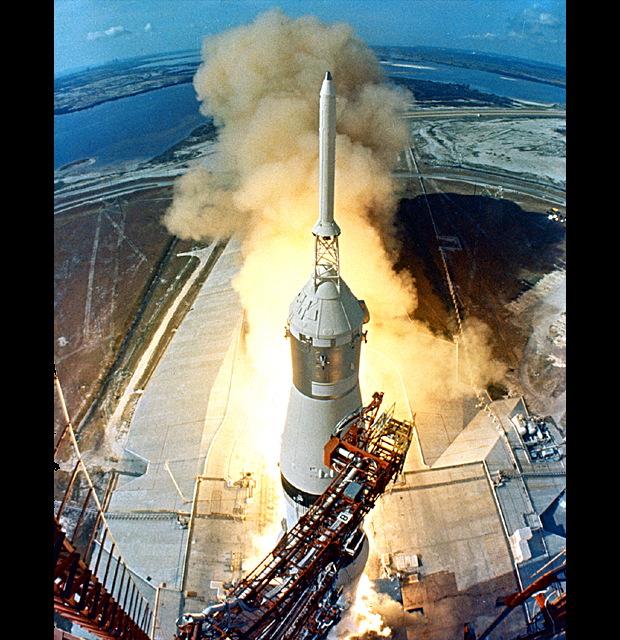Apollo 11 Flight Log, July 16, 1969: Launch Day
Click unmute on the video above to listen to mission audio of the Saturn V launch and listen to over 50 minutes of audio in the video from NASA below.
This summer marks the 50th anniversary of NASA’s Apollo 11 mission. Fifty years ago today (July 16), the Saturn V rocket launched from Cape Kennedy, Florida with a brave crew of astronauts, including two who took humanity’s first steps on the moon. Here's how it happened.
From Launch Pad 39A at Cape Kennedy, Florida, commander Neil Armstrong, command module pilot Mike Collins and lunar module pilot Buzz Aldrin blasted into space in front of an estimated local audience of one million people, including half the members of the United States Congress.
The Apollo 11 launch took place in flawless weather, and the ground equipment had only two correctable problems — a bad signal light and a leaky valve, NASA officials said in a retrospective account of the event.
- Relive the Apollo 11 Moon Landing Mission in Real Time
- Apollo 11 Moon Landing Giveaway with Simulation Curriculum & Celestron!
- Apollo 11 at 50: A Complete Guide to the Historic Moon Landing
Full NASA Apollo 11 Mission Audio: Day 1
The astronauts took their seats in the spacecraft at 6:45 a.m. EDT following a breakfast of steak, scrambled eggs, toast, coffee and orange juice and a ride to the launch pad in an air-conditioned van.
Following the launch at 9:32 a.m., the Saturn V jettisoned its first two stages as planned and retained the third for further maneuvers. The crew safely entered an elliptical Earth orbit 12 minutes later.
Breaking space news, the latest updates on rocket launches, skywatching events and more!
The astronauts did a checkout of their command module, Columbia, before firing their third-stage Saturn V engine again to head toward the moon. Their initial speed was 24,200 mph (38,946 km/h). Once on their way, the astronauts separated Columbia from the third stage and turned around to dock with the lunar module, Eagle, which was packed inside.
The rest of the day proceeded smoothly, with the crew not needing to fire the engines to do a course correction as NASA had planned. The crew went to bed two hours early, at 8:52 p.m., as their spacecraft continued the journey to their destination: a spot on the moon known as the Sea of Tranquility.
Editor's note: This feature, originally posted in 2014, has been updated for the 50th anniversary of the Apollo 11 mission. Space.com contributor Chelsea Gohd contributed to this report.
Follow Elizabeth Howell @howellspace, or Space.com @Spacedotcom. We're also on Facebook and Google+. Originally published on Space.com.

Elizabeth Howell (she/her), Ph.D., was a staff writer in the spaceflight channel between 2022 and 2024 specializing in Canadian space news. She was contributing writer for Space.com for 10 years from 2012 to 2024. Elizabeth's reporting includes multiple exclusives with the White House, leading world coverage about a lost-and-found space tomato on the International Space Station, witnessing five human spaceflight launches on two continents, flying parabolic, working inside a spacesuit, and participating in a simulated Mars mission. Her latest book, "Why Am I Taller?" (ECW Press, 2022) is co-written with astronaut Dave Williams.

